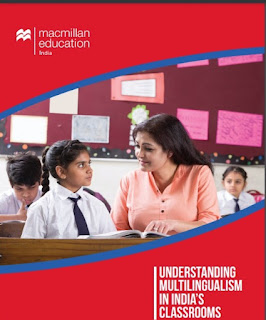The Benefits of Multilingual Classrooms - Macmillan India Report

It is always good when research affirms what we have already observed ourselves: it is beneficial for learners when multiple languages are used in the classroom, particularly if the teaching isn’t in the students’ home language. Macmillan Education India is a key stakeholder in the Indian education arena as they regularly produce resources in both print and digital form in addition to engaging in assessments and teacher training. In February, they presented the results of a survey they did to understand the effects of multilingualism in the classroom. (See full report. ) Managing Director, Rajesh Pasari, writes in the foreword: “ Through this study, we wanted to find out more about this linguistic phenomenon in relation to English classrooms. The study analysed the potential advantages and challenges of linguistic diversity which can impact the everyday lives of Indian learners in educational institutions. The report documents the multilingual reality and various teaching pr...
